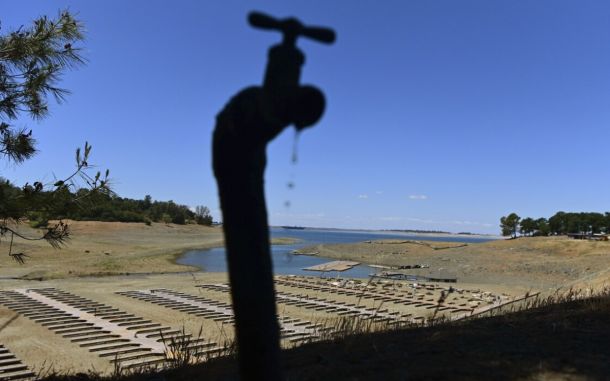How has the war affected the ecology in Ukraine?

According to a recent analysis, Russia’s war in Ukraine has “immediate and longer-term consequences on human health,” as well as “widespread and severe damage” to the environment.
According to the Organization for Economic Co-operation and Development, there may be a green recovery after the war, even though Ukraine must concentrate on reducing risks in the immediate term (OECD).
Damage to the environment in Ukraine
According to the OECD, Ukraine’s progress on environmental issues before the war has been halted by Russia’s invasion.
According to the research, shelling has seriously and widely damaged Ukraine’s infrastructure, natural resources, and ecology. Along with industrial facilities, transportation infrastructure, and housing, this also encompasses ecosystems on land, in the sea, and in the forest.
The infrastructure for managing trash, water, and sanitation in Ukraine has also been harmed.
According to the OECD, this has “immediate and longer-term consequences for human health and ecosystems.”
Long-term health risks
Because of the “continuous onslaught of strikes” against infrastructure like refineries, chemical plants, energy facilities, industrial depots, and pipelines, Ukraine’s air, water, and soil have been contaminated with harmful substances. Building collapses and fires are making the issue worse.
Longer-term health risks like cancer and respiratory disorders are posed by this.
The OECD claims that the effects would be noticed outside of Ukraine’s borders and that they combined represent “serious health risks to the population.”
Unsafe source of water
An estimated 1.4 million Ukrainians lack access to safe water as a result of damage to the country’s water delivery system. Only 4.6 million additional people have reliable access to clean water.
According to the OECD, shelling seriously harmed Ukraine’s water delivery infrastructure, which runs from the Dnipro River to the city of Mykolaiv. Three weeks without access to drinking water followed by neighboring regions sending water to fill basic needs. In June, Ukraine began checking health records for cholera, a bacterial infection that may be lethal and is brought on by ingesting contaminated food or water.
Ukrainian military waste
Because of war actions, waste levels have “dramatically” increased in Ukraine. This comprises wrecked or abandoned military vehicles and equipment, as well as building debris, shell shards, and pieces of other vehicles. Additionally, there is uncollected medical and home garbage.
According to the OECD, some of this trash is dangerous and will require particular management, transport, and disposal. medical waste and shell pieces are two examples. Additionally, harmful materials like asbestos, a fiber-like mineral that can harm the lungs, and heavy metals like lead and mercury, which are associated with a number of health hazards, can be found in building debris.
In Ukraine, nature is in danger
According to estimates from Ukraine, Russian military activity have had an impact on 900 of the country’s protected natural regions. The impacts of conflict are present in almost 30% of Ukraine’s protected areas, totaling 1.2 million hectares.
“Forests have been destroyed by fires from shelling and through misuse by the Russian forces, many being littered with destroyed or abandoned military vehicles,” the OECD says.
Toxic weapons
In Ukraine, unexploded ordnance poses a direct threat to public health. These have negative impact on the quality of surface and groundwater by leaking harmful compounds into the land. Heavy metals used in weapons, explosive substances, and rocket and missile propellants are all examples of hazardous materials.
“The large numbers of abandoned or damaged military vehicles contain toxic materials which pose risks for civilians and the environment and would require careful handling during collection and disposal,” the OECD adds.
Short-term solutions
The urgent risks that the effects of the war pose to human health and the environment should be Ukraine’s main concern in the near future.
According to the OECD, removing the “vast amount” of military and other trash will assist to lower acute health hazards.
Another essential goal will be to fix and rebuild “more efficient environmental infrastructure.” This will be required to collect, store, and treat waste as well as to provide safe drinking water, sanitation, and to start with the health hazards that are the greatest to humans.
Longstanding solutions for Ukraine
Longer term, according to the OECD, Ukraine may “fundamentally transform” itself toward a green, carbon-neutral economy by using its post-war reconstruction.
“The reconstruction should not recreate the pre-war economy, which was fossil fuel-based, energy-inefficient and pollution-intensive,” says the report.





Leave a Reply
You must be logged in to post a comment.